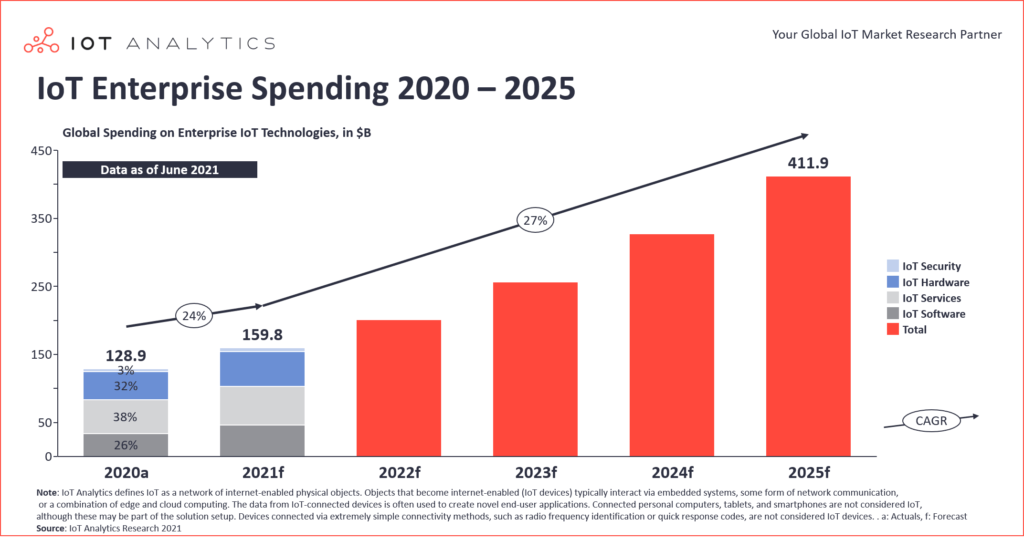The significance of IoT, AI, and ML as catalysts within Ad Tech cannot be overstated. They have not only redefined the way companies establish connections with their target audience but have also revolutionized the optimization of ad campaigns and facilitated data-driven decision-making.
In the fast-paced digital era we live in, technology plays a pivotal role in revolutionizing numerous industries, and one such field that has been significantly impacted is advertising technology (Ad Tech).
As the digital landscape continues to evolve, the seamless integration of IoT (Internet of Things), AI (Artificial Intelligence), and ML (Machine Learning) has opened up a new realm of possibilities for advertisers and marketers.
These transformative technologies have become indispensable drivers within the Ad Tech domain, empowering businesses to achieve unparalleled levels of precision, personalization, and efficiency in their advertising strategies.
In the following article, we will explore the vibrant realm of Ad Tech and investigate how the convergence of IoT, AI, and ML has emerged as a powerful catalyst, fostering innovation and fueling exponential growth.
Read More: How Publishers Can Use Blockchain in Their Operations
Defining IoT and its Relevance to Ad Tech
The Internet of Things (IoT) encompasses a network of interconnected devices equipped with sensors, software, and connectivity, facilitating data collection and exchange. Within the space of Ad Tech, IoT devices encompass a wide range of gadgets such as smartwatches, smartphones, connected TVs, smart speakers, and even household appliances.

The significance of IoT in Ad Tech stems from its capacity to furnish advertisers with real-time and contextual data regarding consumer behavior, preferences, and engagement. By leveraging the vast IoT ecosystem, advertisers gain access to a wealth of information, empowering them to deliver precisely targeted and personalized advertisements.
IoT Devices and Sensor-generated Data for Advertising
IoT devices are equipped with sensors that gather diverse data encompassing location, browsing patterns, user interactions, and environmental factors. When effectively utilized, this rich dataset emerges as a precious asset empowering advertiser to enhance their campaigns’ efficiency and refine targeting accuracy.
Consider, for instance, a smartwatch capable of capturing data about a user’s fitness activities, sleep patterns, and location. This wealth of information enables advertisers to personalize advertisements related to health and wellness products or promote nearby fitness facilities tailored to the user’s needs.
Similarly, connected cars have the potential to provide valuable data concerning commuting routes and driving behaviors, thereby facilitating targeted advertising opportunities for local businesses situated along those routes.
Use Cases and Examples of IoT in Ad Tech
- Hyper-targeted Advertising
IoT data enables precise targeting based on real-time user information. For example, a retailer can deliver personalized offers to customers’ smartphones as they approach a physical store, leveraging location data from IoT devices.
- Contextual Advertising
IoT devices provide contextual cues that enhance ad relevance. An example is connected TVs, which can gather data on viewership preferences, allowing advertisers to deliver targeted ads based on specific genres or viewing habits.
- Dynamic Ad Campaigns
IoT data can trigger dynamic content changes in ads. For instance, weather sensors can trigger ads for raincoats or umbrellas during rainy conditions, ensuring ads remain contextually relevant and timely.
- Enhanced Attribution
IoT data can contribute to more accurate attribution models, enabling advertisers to understand the impact of different touchpoints along the customer journey. It helps optimize ad spending and measure campaign effectiveness more precisely.
Advertisers can unlock a wealth of valuable information about consumer behavior, preferences, and context by harnessing the data produced by IoT devices and sensors.
This newfound knowledge empowers advertisers to provide highly focused, pertinent, and impactful advertising experiences.
Integrating IoT into Ad Tech expands horizons and presents advertisers with extensive opportunities to establish meaningful connections with their target audience.
Defining AI and its Role in Ad Tech
Artificial Intelligence (AI) encompasses the replication of human intelligence in machines, enabling them to undertake tasks that typically demand human cognitive abilities.
Within the Ad Tech space, AI drives innovation by proficiently handling extensive data, identifying patterns, and generating data-informed forecasts to enhance advertising strategies.
AI-based technologies, including machine learning, natural language processing, and computer vision, empower advertisers with the capability to extract actionable insights, automate workflows, and execute focused campaigns on a large scale.
Also Read: How To Personalize Targeted Ads: 10 Ways AI Can Help
AI-powered Algorithms and Intelligent Decision-making
AI-powered algorithms are pivotal in Ad Tech, enabling intelligent decision-making throughout the advertising cycle. Key capabilities include:
- Ad Targeting
AI analyzes user data and behaviors to target ads more precisely, ensuring they reach the most relevant audiences. By considering factors like demographics, interests, and browsing history, AI can optimize targeting and increase the likelihood of conversions.
- Personalization
AI enables dynamic ad personalization, tailoring content and messaging based on individual preferences, demographics, and past interactions. This level of personalization enhances user engagement and improves campaign performance.
- Fraud Detection
AI algorithms can detect and mitigate ad fraud by analyzing patterns, identifying abnormal behavior, and distinguishing between genuine and fraudulent ad interactions. It helps ensure ad budgets are allocated effectively and ads reach legitimate audiences.
- Predictive Analytics
AI models leverage historical data to predict future outcomes, such as ad performance, customer behavior, and market trends. By applying predictive analytics, advertisers can optimize bidding strategies, allocate resources efficiently, and make data-driven decisions.
Applications and Use Cases of AI in Ad Tech
- Ad Creative Optimization
AI algorithms can analyze the performance of different ad creatives and variations, identifying the most effective elements (e.g., images, copy) to optimize engagement and conversion rates.
- Real-time Bidding (RTB)
AI-powered algorithms automate the bidding process in real-time auctions, maximizing each impression’s value by considering factors like user data, ad placement, and campaign goals.
- Customer Segmentation
AI analyzes large datasets to identify distinct customer segments based on shared characteristics, behaviors, and preferences. It enables advertisers to tailor campaigns to specific audience segments effectively.
- Dynamic Pricing
AI models can dynamically adjust pricing based on various factors, such as demand, inventory, and customer behavior, to optimize revenue and maximize sales.
- Voice-Activated Advertising
AI-powered voice assistants and natural language processing allow for interactive and personalized ad experiences through voice-activated devices.
Integrating AI in Ad Tech empowers advertisers to harness the full potential of data-driven decision-making, optimize ad campaigns, and deliver personalized experiences at scale. The applications of AI mentioned above represent just a glimpse of the immense possibilities AI offers to transform the advertising industry.
Leveraging ML for Ad Tech Optimization
Machine Learning (ML) has become a dominant force within the Ad Tech industry, profoundly transforming the way advertisers enhance campaign optimization and refine targeting precision.
The emergence of ML has ushered in a new era of possibilities, enabling advertisers to leverage advanced algorithms and data-driven insights for unparalleled effectiveness.
By harnessing ML capabilities, advertisers can unlock the full potential of their campaigns, achieving remarkable outcomes that were once unimaginable.
Understanding ML and its Impact on Ad Tech
Machine Learning (ML) is a branch of Artificial Intelligence (AI) dedicated to empowering systems to learn from data and enhance their performance without explicit programming.
By employing ML algorithms, extensive data sets can be automatically analyzed, enabling the identification of patterns and the generation of data-driven predictions or decisions.
Within the Ad Tech, ML assumes a pivotal role in the optimization of advertising campaigns, bolstering targeting capabilities, and fostering improved outcomes.
ML algorithms can process substantial data volumes, unearthing invaluable insights that may prove arduous for humans to discern. That, in turn, facilitates the development of more effective and efficient advertising strategies.
Optimizing Ad Campaigns with ML Algorithms
ML algorithms are at the core of ad campaign optimization in Ad Tech. They enable advertisers to leverage data to make informed decisions and continuously improve their campaigns. Key aspects include:
- Data Analysis and Pattern Recognition
ML algorithms analyze large datasets to identify patterns and trends in user behavior, demographics, and preferences. This analysis helps optimize ad targeting, creative messaging, and campaign performance.
- Real-time Decision-making
ML algorithms can process data in real time, enabling dynamic adjustments to ad campaigns based on changing conditions, user interactions, and market dynamics. This real-time decision-making optimizes ad delivery and enhances performance.
- Predictive Modeling
Based on historical data, ML models can predict user behavior, engagement, and conversion probabilities. These predictions aid in optimizing bidding strategies, budget allocation, and ad placements for maximum impact.
Examples of ML Techniques in Ad Tech
- Recommendation Systems
ML algorithms power recommendation systems that suggest relevant products, services, or content to users based on their preferences, browsing history, and past interactions. Recommendation systems enhance user experience and drive engagement.
- User Segmentation
ML techniques enable the identification and clustering of users into distinct segments based on shared characteristics, behaviors, and preferences. User segmentation facilitates targeted ad delivery and personalization.
- Bid Optimization
ML algorithms optimize bidding strategies by analyzing factors such as historical data, user behavior, and ad performance. This optimization ensures advertisers achieve the best return on ad spend and maximize campaign objectives.
- Ad Fraud Detection
ML models can identify patterns and anomalies indicative of ad fraud, such as bot traffic, click fraud, or impression fraud. ML-based fraud detection helps safeguard ad budgets and maintain campaign integrity.
- Creative Generation and Testing
ML algorithms can generate ad creatives based on user preferences, design principles, and historical performance data. ML-powered testing frameworks can also automatically optimize ad variations to determine the most effective combinations.
Also Read: ChatGPT in AdTech: Will It Bring More Opportunities for Publishers?
Synergies and Integration of IoT, AI, and ML in Ad Tech
The convergence of IoT, AI, and ML in the Ad Tech ecosystem presents a transformative opportunity for advertisers to unlock new dimensions of advertising capabilities.
The Combined Power of IoT, AI, and ML
Integrating IoT, AI, and ML creates a powerful synergy that enables advertisers to leverage the vast amounts of data generated by IoT devices and sensors. AI and ML algorithms can analyze this data to derive valuable insights, make informed decisions, and optimize advertising strategies. Key aspects include:
- Real-time and Contextual Insights
IoT devices capture real-time data, providing advertisers with up-to-date insights into user behavior, preferences, and context. AI and ML algorithms process this data to deliver real-time contextual and personalized ad experiences.
- Advanced Targeting and Personalization
Combining IoT, AI, and ML allows for precise targeting and personalized ad delivery. Advertisers can leverage IoT data to understand consumer habits, locations, and preferences, while AI and ML enable dynamic personalization based on these insights.
- Data-driven Decision-making
IoT, AI, and ML provide advertisers with data-driven decision-making capabilities. Advertisers can optimize bidding strategies, ad placements, and content based on predictive analytics and historical data, leading to more effective and efficient campaigns.
Opportunities and Enhanced Advertising Capabilities
The integration of IoT, AI, and ML opens up new possibilities and enhances advertising capabilities in several ways:
- Hyper-targeted Advertising
Advertisers can leverage IoT data and AI-powered algorithms to deliver hyper-targeted ads based on real-time user information, interests, and location. This level of targeting ensures ads reach the most relevant audiences, increasing the chances of conversion.
- Enhanced Personalization
IoT devices provide valuable context about user behavior and preferences, allowing advertisers to deliver personalized ad experiences. AI and ML algorithms analyze this data to tailor content and messaging, enhancing user engagement dynamically.
- Improved Ad Campaign Optimization
Integrating IoT, AI, and ML enables advertisers to optimize ad campaigns based on real-time data and intelligent algorithms. This optimization ensures efficient budget allocation, improved ad performance, and a better return on investment.
Challenges and Considerations
While integrating IoT, AI, and ML in Ad Tech presents exciting opportunities, advertisers must address several challenges and considerations to ensure responsible and effective implementation.
- Privacy Concerns and Data Security
User Data Collection
Data collection through IoT devices raises concerns about the privacy and consent of users. Advertisers must ensure transparency in data collection practices, obtain proper authorization, and adhere to applicable data protection regulations.
Data Storage and Security
The vast amount of data IoT devices generate requires robust storage and security measures. Advertisers must implement appropriate encryption, access controls, and data protection mechanisms to safeguard user data from unauthorized access or breaches.
- Ethical Considerations
Transparency and Trust
Advertisers must prioritize transparency and build trust with users by clearly communicating how IoT, AI, and ML are utilized in ad campaigns. Users should have control over their data and the ability to opt out of data collection or personalized ads.
Fairness and Bias
AI and ML algorithms must be designed and trained to avoid biases and ensure fair treatment of all users. Advertisers should regularly monitor and evaluate their algorithms to identify and rectify any preferences that may impact ad targeting or decision-making.
- Regulatory and Legal Compliance
Data Protection Regulations
Advertisers must comply with relevant data protection regulations, such as the General Data Protection Regulation (GDPR) or the California Consumer Privacy Act (CCPA). They should establish processes and policies to handle user data in accordance with these regulations.
Ad Industry Guidelines
Advertisers should adhere to industry guidelines and best practices to ensure the responsible use of IoT, AI, and ML in advertising. Organizations like the Interactive Advertising Bureau (IAB) provide policies that promote transparency, privacy, and user-centric practices.
- Mitigating Challenges
User Education and Consent
Advertisers should prioritize user education about the benefits and implications of IoT, AI, and ML in advertising. Clear communication, opt-in mechanisms, and user control options enhance transparency and empower users to make informed decisions.
Robust Data Governance
Advertisers should establish robust data governance frameworks, including data retention policies, access controls, and regular audits. These measures ensure that user data is handled securely and complies with regulations.
Ethical AI Practices
Advertisers must adopt ethical AI practices, including robust model testing, bias detection, and fairness assessments. Regular audits and monitoring of AI algorithms help identify and address biases or unethical behavior.
Collaboration with Regulatory Bodies
Advertisers should actively engage with regulatory bodies, industry associations, and relevant stakeholders to stay informed about evolving regulations and best practices. This collaboration fosters responsible and compliant use of IoT, AI, and ML in Ad Tech.
Final Thoughts
Advertisers must adopt IoT, AI, and ML to maintain competitiveness and create impactful ad campaigns in today’s rapidly advancing technological landscape and the ever-changing realm of Ad Tech.
However, it is equally vital to tackle the associated challenges, ensuring privacy, ethical practices, and compliance with regulations.
By harnessing the potential of IoT, AI, and ML, advertisers can unlock the power of data, optimize targeting and personalization, and make informed, data-driven decisions to achieve better campaign outcomes.
The integration of these technologies empowers advertisers and publishers to provide highly relevant and captivating ad experiences to their target audiences, resulting in improved customer satisfaction, increased conversions, and enhanced return on investment. Setup a demo here to grow your ad revenue up to 40%.
FAQ
IoT devices generate valuable data that advertisers can leverage for targeted advertising, enabling personalized and context-aware ad experiences.
AI powers intelligent algorithms that optimize ad campaigns, enable ad targeting and personalization, detect ad fraud, and provide predictive analytics for improved decision-making.
ML algorithms analyze vast amounts of data to optimize ad campaigns, improve user segmentation, enhance recommendation systems, and optimize bidding strategies.
Integration of these technologies enables hyper-targeted advertising, enhanced personalization, improved ad campaign optimization, and better fraud detection, resulting in higher engagement and improved ROI.

Shubham is a digital marketer with rich experience working in the advertisement technology industry. He has vast experience in the programmatic industry, driving business strategy and scaling functions including but not limited to growth and marketing, Operations, process optimization, and Sales.




![CTV vs OTT Advertising: Which one is Right Pick for Publishers? + [6 Bonus Strategies] Ott vs Ctv](png/featured-image-270x180.png)


